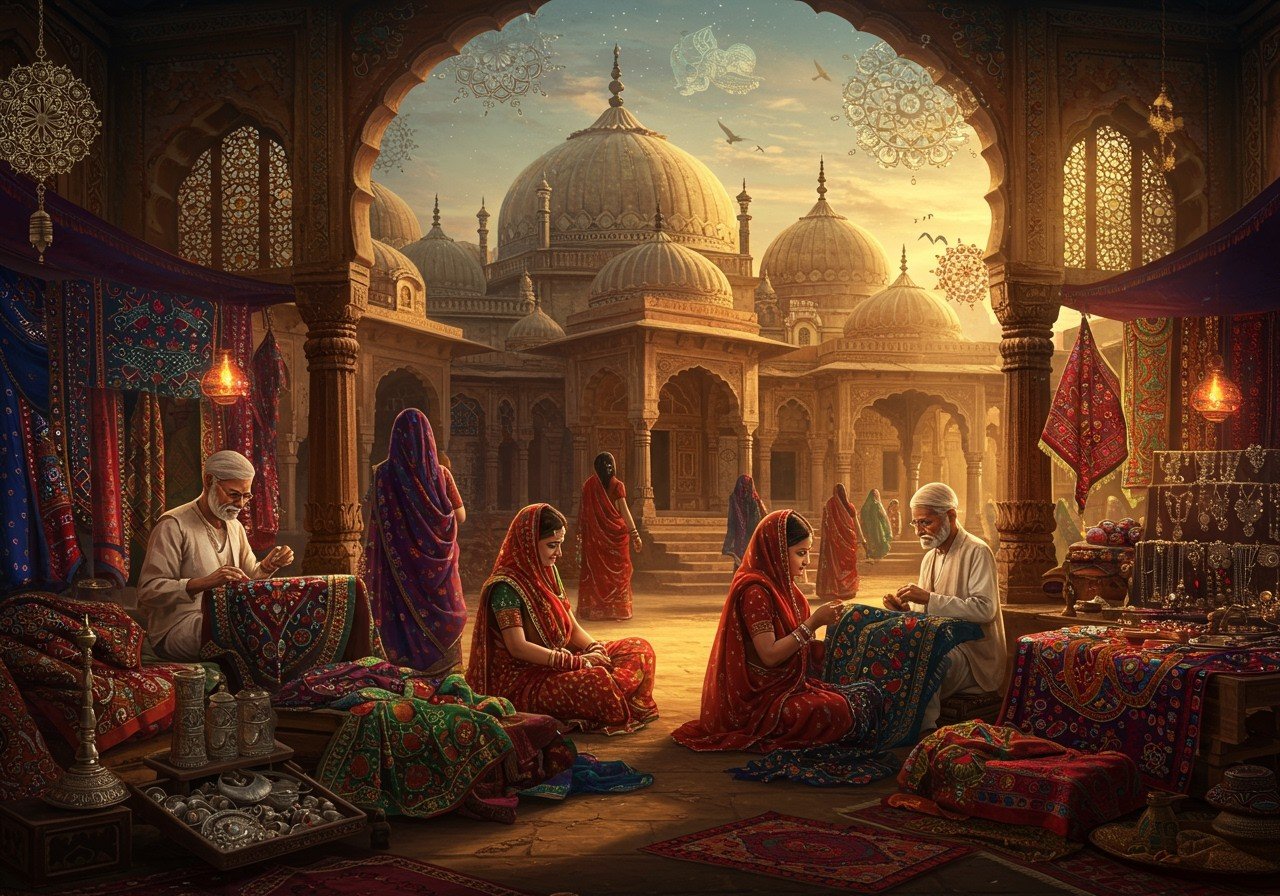
Sindh and Gujarat, though separated by a border, share a profound cultural bond. This connection is woven through shared histories, languages, and traditions. This article delves into the historical, linguistic, and cultural ties that bind these neighboring regions.
Historical Context
Historical Connections Between Sindh and Gujarat
Understanding the cultural connections between Sindh and Gujarat begins with their intertwined history. Ancient trade routes fostered exchanges, and the Indus Valley Civilization spanned parts of both regions, showcasing shared roots.
- Ancient Trade Routes: These routes served as vital conduits, promoting not only economic exchange but also the flow of cultural ideas and practices between Sindh and Gujarat. This continuous interaction shaped both regions’ development.
- Indus Valley Civilization: This ancient civilization, a cradle of human development, covered parts of both Sindh and Gujarat. This shared origin story demonstrates a deep connection reaching back millennia, laying the foundation for future cultural exchange.
- Dynasties Influence: The Mauryas, Guptas, Delhi Sultanate, and Gujarat Sultanate all played significant roles in shaping cultural interactions. Their reigns influenced the political and social landscapes, impacting cultural development and exchange between the two regions.
- Arab Conquest: The Arab conquest of Sindh brought significant cultural shifts, influencing trade and religious practices. These changes rippled outwards, impacting Gujarat’s trade networks and introducing new cultural elements.
- Colonial Period: British rule significantly affected the cultural landscapes of both Sindh and Gujarat. The introduction of new administrative systems and educational institutions left a lasting impact on both regions.
- Post-Independence: The partition of India and Pakistan in 1947 had a profound impact on communities in both regions. It led to significant migrations and reshaped the cultural landscape, creating new challenges and opportunities for cultural expression.
Linguistic Affinities
Similarities Between Sindhi and Gujarati Languages
Language is a powerful reflection of cultural identity. Sindhi and Gujarati share linguistic similarities that underscore their shared heritage.
- Roots in Sanskrit and Prakrit: Both languages trace their origins back to Sanskrit and Prakrit, ancient languages that formed the bedrock of many South Asian languages. This common ancestry contributes to their shared linguistic features.
- Common Vocabulary: Sindhi and Gujarati share numerous words and exhibit phonetic similarities. This lexical overlap makes it easier for speakers of one language to grasp the other, facilitating communication and cultural exchange.
- Influence of Persian and Arabic: Historical interactions with Persian and Arabic cultures have influenced both languages, enriching their vocabulary and literary traditions. These linguistic additions reflect the historical connections between the regions.
Cultural Exchanges
Shared Traditions Between Sindh and Gujarat
Cultural exchanges have profoundly enriched the traditions of both Sindh and Gujarat, creating a vibrant tapestry of shared customs and practices.
- Culinary Traditions: Shared recipes, such as Sindhi Kadi and Gujarati Kadhi, exemplify the culinary connections. The subtle variations in spices and preparation methods reflect the unique regional identities while highlighting the shared love for flavorful food. Explore more about culinary traditions.
- Craftsmanship: Sindhi craftsmanship, renowned for its intricate details, has deeply influenced Gujarati textiles and embroidery. From pottery and glazed tiles to hand-woven textiles, Sindhi artistry is appreciated and incorporated into Gujarati crafts, creating a unique blend of styles. Explore traditional Sindhi crafts at Poojn.in.
- Festivals: Shared festivals, such as Navratri and the Sindhi New Year, highlight the intertwined cultural calendars. The vibrant celebrations and rituals bring communities together, reinforcing their shared identity and cultural bonds. Learn more about Gujarati festivals and culture.
Sindh-Gujarat Border
The geographical proximity of Sindh and Gujarat has facilitated cultural interactions across the border, shaping a unique cross-border identity.
- Cross-border Communities: In regions like Kutch, Sindhi-speaking communities coexist harmoniously with Kutchi and Gujarati speakers. This intermingling creates a distinctive cultural landscape, where languages, customs, and traditions blend seamlessly.
Religious and Spiritual Connections
Religion and spirituality play a vital role in shaping the cultural heritage of both Sindh and Gujarat, fostering a sense of shared beliefs and practices.
- Influence of Hinduism and Islam: Both regions have deep roots in Hinduism and Islam, and the syncretic nature of these religions has led to shared spiritual practices. This interfaith harmony contributes to the rich cultural tapestry of the region.
Poojn.in: Your Gateway to Cultural and Religious Products
Poojn.in, India’s leading online store for cultural and religious goods, offers a wide selection of products to support the rich traditions of Sindh and Gujarat. We provide authentic puja items, handcrafted décor, and religious texts, delivered right to your doorstep.
Conclusion
The cultural exchanges between Sindh and Gujarat weave a rich tapestry of shared heritage. From culinary delights to spiritual pilgrimages, the ties that bind these regions are a testament to their enduring connection. By celebrating these exchanges, we honor the legacy of generations past and present who have contributed to this vibrant, shared cultural tapestry.


